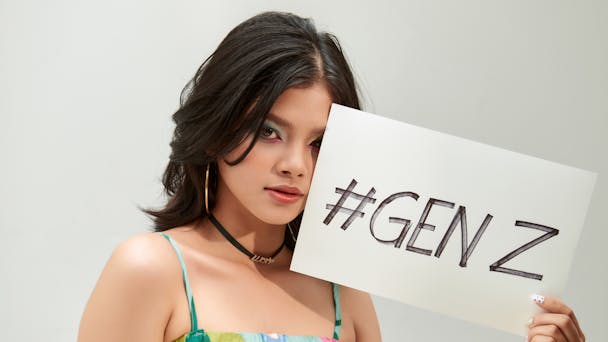I studied Gen Z news habits and can say without a doubt, it’s not them, it’s you!
Thread and Fables’ Rebecca Roberts has spent months trying to understand how news brands can reach younger people better. Here are her Gen Z findings.

Sometimes, we get that audience brief and know we’re in for a ride. Aim for the “youths” is all too common. It’s as vague a target as it gets. Therein lies perhaps the biggest issue when it comes to engaging youth audiences: under-25s are usually lumped together as one homogenous group.
We have to do more than throw some graffiti design their way and then claim they’re ‘hard to reach’ afterwards.
After deep diving into Gen Z news media habits, there are a few other things to stay on top of if you’re hoping to stay relevant and engage a youth audience…
Brand relationships have changed
Growing up with declining print news media and the online world at their fingertips, the relationship with news media brands, even with digital touch points, has definitely shown to be lacking among a Gen Z demographic. Even publicly funded channels such as the BBC don’t have the ingrained relationship so many previous generations were exposed to, with YouTube having a majority share of media consumption throughout childhood.
This lack of brand affiliation means that even with a plethora of digital touchpoints, Gen Z, unlike Millennials, are less likely to go to news sites first and less likely to have paid subscriptions. News brands are in the main still playing catch-up to build connections and engage users where they are, competing for attention in social-first journeys.
That said, according to the industry chats I had, Gen Z is still keen on journalists being well-trained, trustworthy and looking and sounding like them. While they may respect the opinions from creators they follow, there is still a space for trusted journalism.
Social-first, obviously
A lack of trust and exposure to mis and disinformation seems to be the accepted fee for a social-first news content journey, but this doesn’t come without its risks – cue examples of everyone becoming a royal investigator... and then regretting it when the truth came out.
It’s been a shortcoming of many news brands to dismiss social media as an unreliable, noisy space for ‘proper’ news content, and this delay at joining the party has left space for alternative providers (some good, some less so), from meme accounts, to social-first news outlets.
It’s also true that while Gen Z is, in the main, in favor of social first journeys, it’s not at the expense or exclusivity of in-depth reporting and all other formats. Looking at community-focused platforms like Twitch and Discord or more in-depth news podcasts, you’ll find a contrasting user journey.
This doesn’t mean you have to start thinking about TikTok trends, but more so how you might exist in the right spaces to engage your particular youth cohort. How can you show up where they are in a relevant way and interact? More importantly, which groups of users are you trying to engage with and where?
Drop the main character ego
Some signs of how youth media was making progress came from a number of industry interviews as part of the research. Vice applied insights to gain an understanding of the issues and content themes its target audience was most interested in and aligning content to it. It also gained a deeper understanding of who should be the talent conveying it; representative, but trained journalists, talking as peers and investigating the story alongside the audience.
Another interesting finding from the youth survey done as part of the report was the very definition of what ‘news’ means to Gen Z, who were overwhelmingly more likely to define news as anything new to them than their older Millennial peers. Therefore, news has a far broader definition to entertain, inform, educate and explore subjects with a younger audience, and therein lies the opportunity.
News outlets have been too slow at reflecting the shifting audience patterns and expectations, which never had to come at the expense of quality journalism. The race is now on to build the connection with a younger demographic in a bid to future proof their own position.
Find me at www.threadandfable.com @rebecca7roberts (X) or on LinkedIn and if you can listen to the Hear It Podcast. Roberts is founder of Thread & Fable and author of CIPR research report ‘What does news media mean to Gen Z? An investigation into the media habits of Gen Z in the UK’

